One of the Temporary exhibitions most anticipated of this year is “Balenciaga and Spanish painting”. which you can see in the Thyssen-Bornemisza museum until the September 22.
Cristobal Balenciaga is possibly one of the most admired and influential fashion designers of all time.
This exhibition presents the link between painting from the 16th to the 20th centuries, with the creations of the Basque designer.
It's the first large exhibition dedicated to Balenciaga that is presented in Madrid in almost 50 years, and it brings together 90 designs along with an important collection of paintings by such well-known Spanish artists as El Greek, Zurbaran, Velázquez, Goya, Madrazo, to the hole o Carreño de Miranda.
These were an important source of inspiration for Balenciaga and in this exhibition you will be able to see the influence that the works of these Spanish artists had on their designs.
All the information in detail
Who was Balenciaga, his life
Of humble origins, Cristobal Balenciaga was born in 1895 in Guipúzcoa, specifically in Getaria; son of a fisherman who died at sea and a seamstress mother, from whom the designer learned his great love of sewing from a young age.
At only thirteen years old, the grandmother of the Queen Fabiola of Belgium who summered in Getaria He was struck by the young man's desire to learn. Balenciaga.
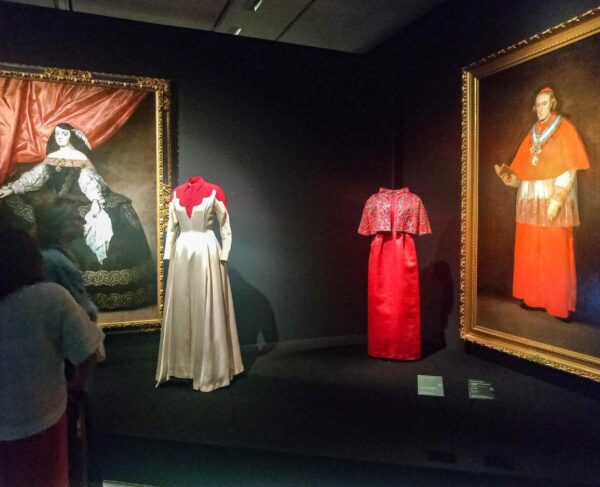
She decided to pose a challenge and gave her a piece of fabric and one of her most exclusive dresses; The objective was for him to copy it and thus demonstrate his talent.
The result surprised the marchioness so much that she became her patron.
Since then, its success has not stopped growing, dressing the aristocracy and the Spanish royal family.
When the Civil War, Balenciaga He closed the stores he had in Madrid, Barcelona and San Sebastián and moved to Paris, opening his first workshop in the French capital in 1937.
Balenciaga She had great mastery of sewing, as well as the fabrics she worked with. He preferred to work with weighted fabrics and decorate them with hand embroidery, rhinestones and sequins.
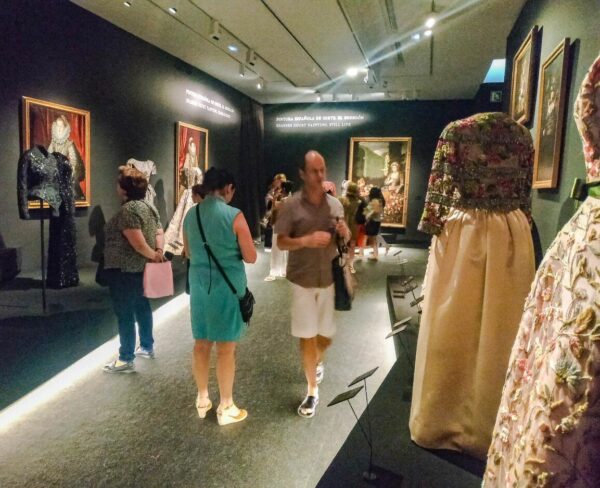
Her ability to create volumes and shapes was surprising, the finish was perfect and if she was not satisfied with the result, she would disassemble the dress.
She created designs for her best clients without testing, and her client list high society It was very extensive, with characters like Marlene Dietrich, Greta Garbo o Grace Kelly.
Balenciaga designed the wedding dresses Queen Fabiola of Belgium and the Duchess of Cadiz, Carmen Martínez-Bordiú in 1972, four years after retiring and which was his last work.
Christian Dior said "With fabrics, designers do what we can, but Balenciaga does what it wants“. Without a doubt it was the king of haute couture.
Balenciaga, passionate about the great masters of Spanish painting, especially Velázquez and Goya.
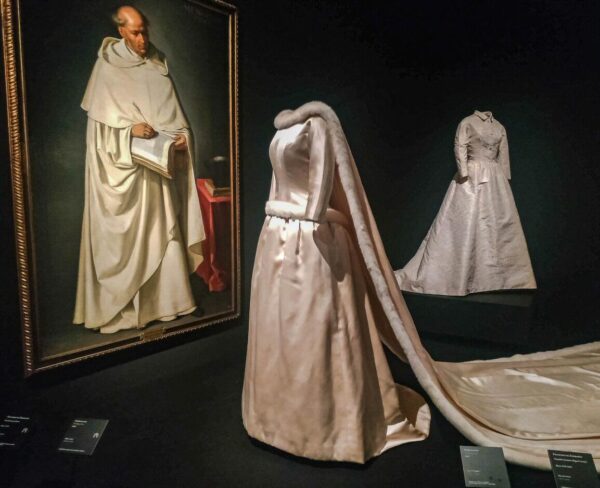
A man of reserved character and very rigorous in his work, in addition to being tremendously discreet, which was essential in the world of aristocracy in which he moved, he was not a friend of crowds or worldly life and he led his private life with great care. discretion.
The only approach he had to ready-to-wear were the uniforms he designed for the flight attendants Air France.
He retired in 1968, being considered the true father of haute couture, and France in gratitude named him Knight of the Legion of Honor.
He returned to Spain and ended up living in Altea, where he dedicated himself to painting.
ORGANIZE your TRIP
- Don't forget your TRAVEL INSURANCE with a 5% discount
- Book the HOTEL for your trip
- RENT a CAR for your trip
- The best TOURS and EXCURSIONS in Spanish
- NO-LINE TICKETS for museums and monuments
- Best FREE TOURS around the world
- Book your TRANSFER from the airport
- eSIM card with INTERNET at the best price
Balenciaga died in Javea at the age of 77, and was buried in his hometown Getaria, where you can currently visit the Balenciaga museum with a collection of about 1.200 pieces.
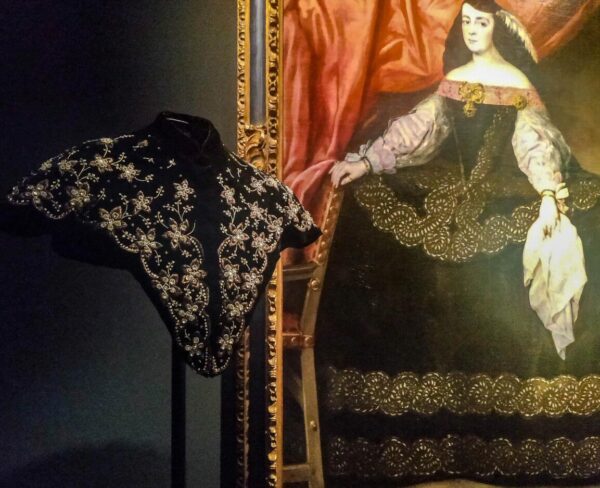
Currently the Balenciaga brand is detached from the figure of Cristobal Balenciaga, since the rights to it were purchased from his heirs.
A phrase from the designer himself that defines his work is “uA good couturier must be, an architect for patterns, a sculptor for form, a painter for drawings, a musician for harmony and a philosopher for measurement.”
What to see at the Balenciaga exhibition in Madrid
The exhibition is held in six rooms, following a chronological itinerary through the paintings. In the last one you can see the projection of a video about the designer.
In total there are 56 paintings that accompany the 90 designs of Balenciaga.
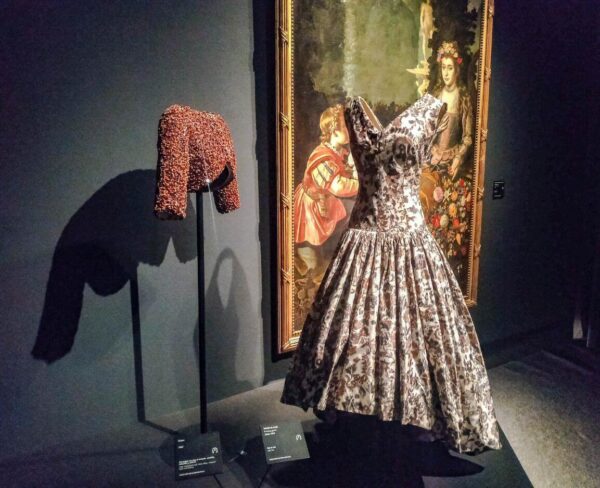
The designs come from Cristobal Balenciaga museum of Getaria, the Costume museum from Madrid, the design museum from Barcelona and some private collections, both national and international.
You will be able to observe the link between the painting and the designs of the brilliant couturier, with chromatic connections, as well as in shapes and volumes.
The exhibition pays tribute to the color black, which was the designer's fetish color.
It also allows you to see art from a different point of view, observing painters as creators and transmitters of fashion of their time.
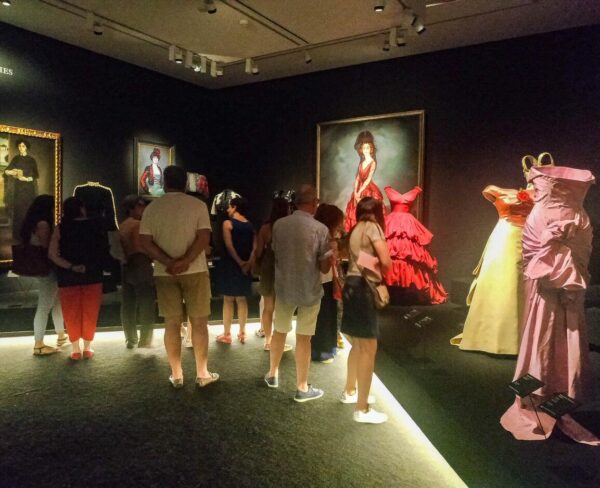
We tell you a little about what you are going to see in each of the sections.
Balenciaga and art
You will begin by seeing three paintings that come from the Prado Museum, two of Goya and one of Velázquez.
You will be able to see the duel of a spectacular evening dress and blue silk cape with the mantle of the Inmaculada Concepción de Murillo.
A red dress and jacket set in dialogue with the painting Goya, Cardinal Don Luis María de Borbón y Vallabriga.
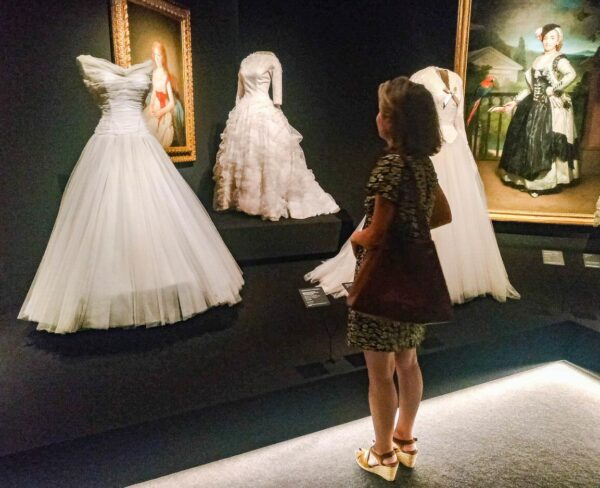
Balenciaga and El Greco
The influence of El Greek is important in his work and the exhibition shows you an evening coat in black silk velvet and a gathered collar that reminds us of the shape of the ruff. portrait of a gentleman de El Greek.
Next, you will see several works with a religious theme accompanied by intensely colored dresses, in pinks, yellows, greens and blues, which remind us of the color palette with which El Greek painted mantles and dresses Virgins.
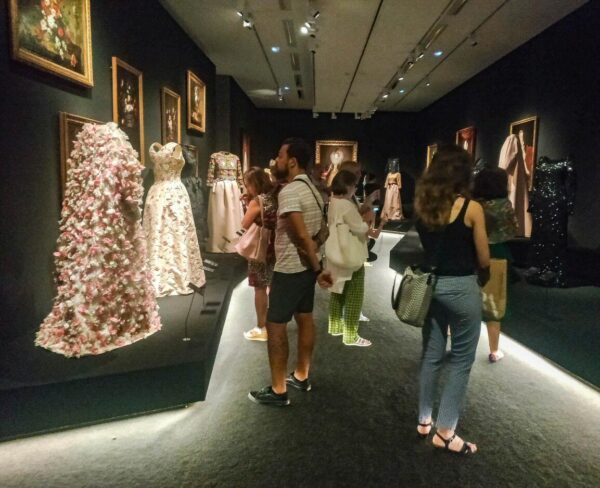
Spanish Court Painting
Three types of works are gathered in this room.
First of all, there are those related to the Color black which became fashionable throughout Europe at the time of Felipe II, and of what Balenciaga He made his own interpretation, giving it light and intensifying the tones.
In this room you will see, among other outfits, the comparison made between an impressive evening dress made of satin, combining black and ivory with a portrait of the VI Countess of Miranda.
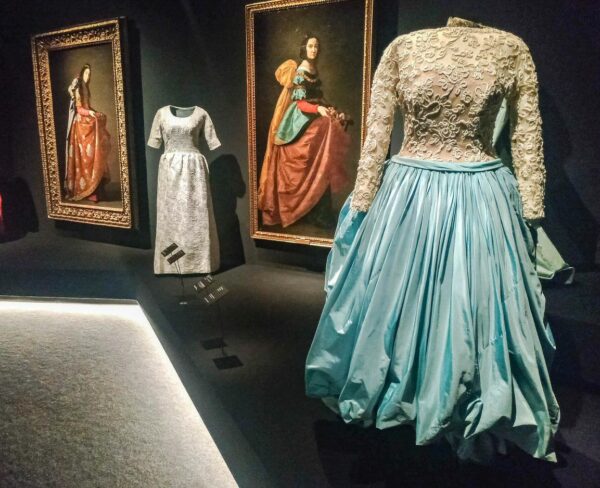
The still life It is one of the most recurring themes in painting.
Don't forget your Travel Insurance
Are you organizing your trip or getaway? Don't leave without take out your travel insurance before, and here we explain why. If you hire it with us, you have a 5% discount
When Balenciaga arrives in Paris, comes into contact with the most important artisans and fabric creators of the time, creating fabulous dresses integrating buttons, flowers or feathers into their designs, all very pretty and cheerful, and you will have a hard time deciding which one you like best.
Likewise, inspired by the collection of historical clothing that he owned, in which the ornamental richness was the most significant, Balenciaga incorporated the embroidery in many of his creations.
Here you can see, among others, the ceremony dress from the collection of María de las Nieves Mora y Aragón, which is paired with a portrait of Anne of Austriaa.
Balenciaga and Francisco de Zurbarán
For many, the painter from Extremadura is considered one of the first fashion designers for the fabulous representation he made of fabrics and the movement of the fabrics that he achieved in the paintings.
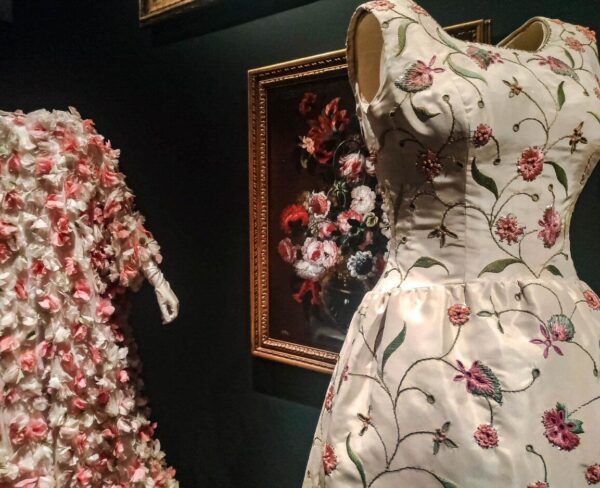
In this section of the Balenciaga exhibition you will see the dress she wore Fabiola de Mora and Aragon when she married him king Baudouin of Belgium.
Balenciaga and Francisco de Goya
Goya was another of the key painters in the creations of Balenciaga.
The handling of color and how the painter transformed shapes into tonal spots influenced the Basque designer to create beautiful chromatic harmonies.
The picture of the queen María Luisa with tontillo, paired with an evening dress made of light green satin with pearls and beads, is one of the sets that mark this section.
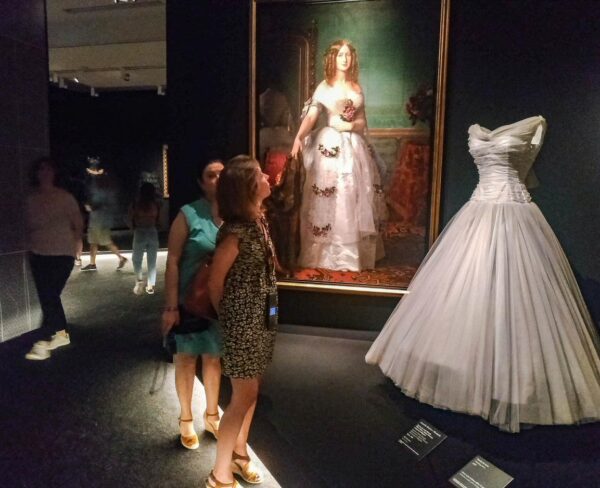
Balenciaga and the painters of the 19th and 20th centuries
The daily life that the designer led in his youth, as well as the regional and popular aesthetics of Spain, undoubtedly marked the work of Balenciaga.
Contemporary artists such as Ignatius Zuloaga, whom he visited frequently during his time in San Sebastián, also influenced his designs.
It is really curious to compare the puffy red taffeta evening dress with the portrait painting of María del Rosario de Silva y Gurtubay, Duchess of Alba, work of the Basque artist.
In short, an essential exhibition whether you visit Madrid or live in the capital.
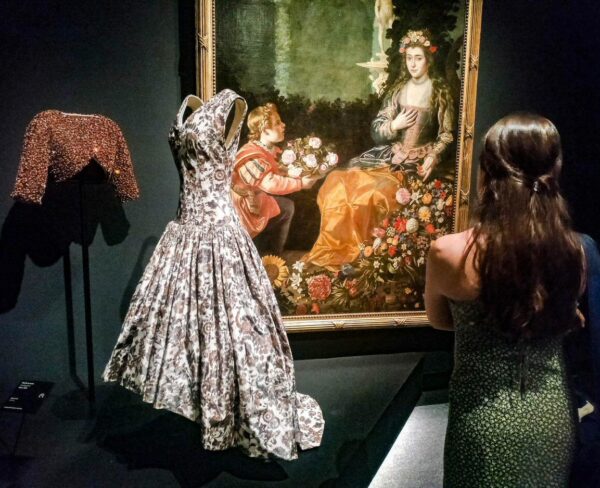
Balenciaga and Spanish painting exhibition hours
The Visiting hours for the Balengiaga and Spanish painting exhibition at the Thyssen-Bornemisza museum They are, from Tuesday to Saturday, from 10 a.m. to 21 p.m. until September 7, closing at 19 p.m. in the rest of the month of September.
On Mondays the exhibition is closed to visitors.
Balenciaga exhibition ticket prices
The ticket prices to visit the Balenciaga exhibition They are, the general one, 13 euros, the reduced one, 9 euros, and it is free for those under 18 years of age, unemployed and people with disabilities.
Book your hotel, 15% discount, free cancellation
When planning your trip, we advise you to, well in advance, Book your hotel now on booking.com where you can find discounts from 15% and you will have a possible cancellation for free
As complementary activities, we tell you that on September 19, a day is held to delve deeper into the figure of the famous couturier and his connection with Spanish painting from the XNUMXth to the XNUMXth centuries.


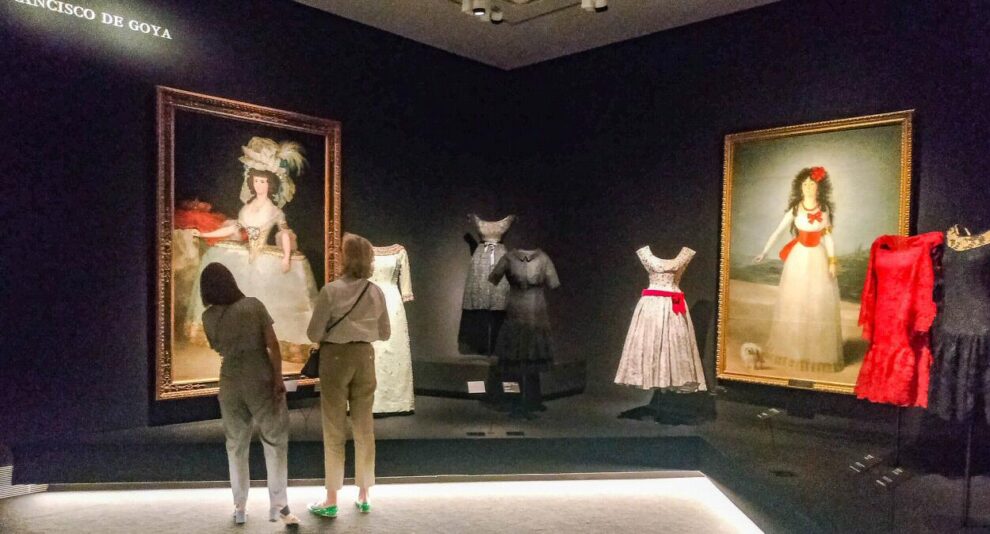
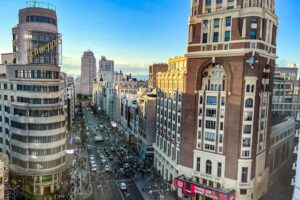
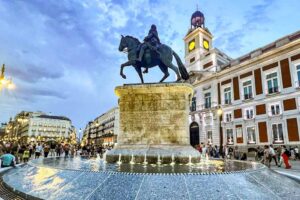
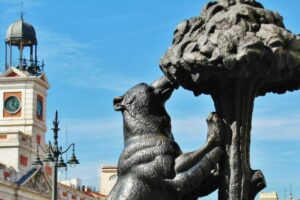











Comment